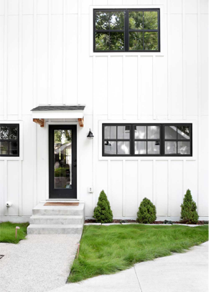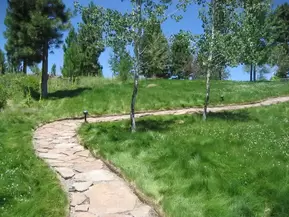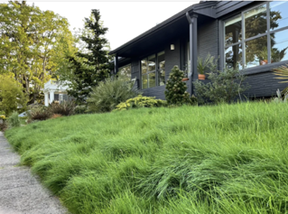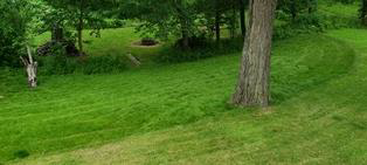|
Manicured lawns cover millions of acres in America. No-mow lawns are challenging this conformity. They are better for the environment because they require less water and fertilizer. Traditional lawns are very thirsty and hungry, requiring irrigation and fertilizer. It may take years for communities to broaden their definition of green space. Before you decide to tear out your grass, find out if your community or neighborhood has ordinances defining what can be planted in your yard. No-mow yards fall into four categories: 1. Naturalized grass that is left to grow wild 2. Low- growing turf grasses that require little grooming (blend of fescues) 3. Native or naturalized landscapes where turf is replaced with native and noninvasive grasses 4. Clover lawns This blog will focus on fescue no-mow and clover lawns. Any lawn can be a no-mow lawn if you just don’t mow it, but you will end up with just as many weeds if you don’t use the right seed combination. No-mow grass is a blend of hardy fescue and fine fescues designed to create a lush green lawn that is essentially weed-free (once the grass matures.) Fescue is a cool season grass that thrives in sun but can tolerate partial shade and grows in most parts of the United States except zones 8-10. Drought-tolerant strains of fescue prefer sandy, loamy soil and requires little or no fertilizer. No-mow blends differ according to regional growing conditions, but most contain five types of fescue: hard, sheep, chewing, red and creeping red. These work together to create a dense, green lawn that requires just a spring and fall mowing. Fescue isn’t the only no-mow alternative. In the south, Buffalograss and Zoysia offer drought-tolerant choices. An alternative being featured on TV home improvement shows are clover mixes. Clover lawns are easy to start and maintain. Popular clover lawns are planted with Micro Clover (trifolium repent var pipolina). It is a type of Dutch white clover which doesn’t clump as much as others. Clover lawns fill out bare lawn patches, support biodiversity, requires no chemicals and little water. However if you don’t like bees, this may not be the lawn for you. Additionally, if you live where deer frequently browse, the clover will not only attract them, but may not be able to recover from the heavy feeding of a few hungry deer. Courtyard and protected urban lawns are great candidates for clover lawns.
If you want to reduce the time you spend caring for your grass, including mowing, fertilizing, treating dandelions, grubs and moles, and watering, you might want to consider an alternative to growing traditional grass. Clearly, clover and fescue may not be an option if local ordinances don’t allow for them. But it would be worth a call to see if your community would permit planting clover or fescue on the perimeter of your yard, such as a transition to a wooded area. And if you are free to plant what you want, give clover or fescue a try. The savings on water and chemicals would benefit the household budget and the environment.
0 Comments
Your comment will be posted after it is approved.
Leave a Reply. |
Thank you for finding us! Holly and I have collaborated to bring you informative, fun, and seasonal garden inspiration blogs.
Subscribe to receive our blogs on the 1st and 15th of the month--Gwen Follow my landscape & garden design Pinterest Page to see more pics, inspiration and Gwen's home garden journey!
AuthorsGwen Wisniewski: Landscape and Garden Designer. Contact me. Let me help you integrate these garden inspirations. Choose the links below to find out more about my landscape design service or to make an appointment. |










 RSS Feed
RSS Feed